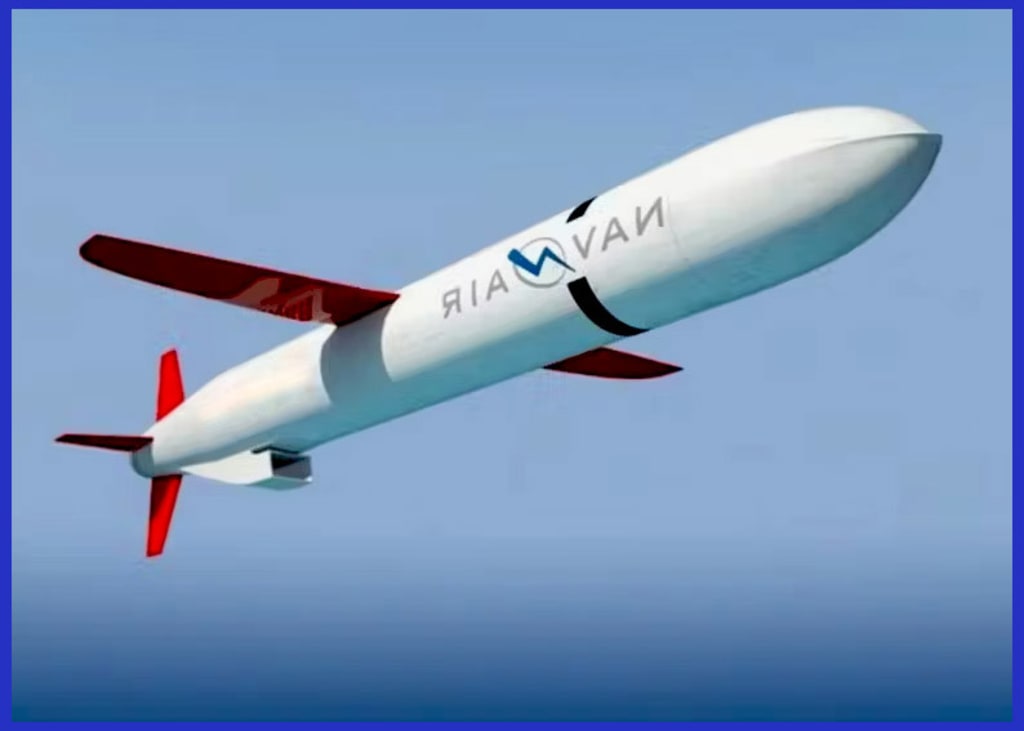The Tomahawk Cruise Missile: A Versatile Marvel of Naval Warfare
By Prajesh Majumdar

The Tomahawk Cruise Missile, a technological marvel in modern warfare, has become a cornerstone of naval firepower, and it is presently developed by Raytheon. Unveiling the Best of the Tomahawk Cruise Missile, it serves as a highly adaptable and precise instrument for both the United States Navy and the Royal Navy in conducting numerous land-attack warfare operations from ships and submarines. Its versatile design accommodates a spectrum of mission profiles, encompassing both land attack and anti-ship warfare, and it boasts dimensions of approximately 20 feet in length with an 8.9-foot wingspan.
The Tomahawk Land Attack Missile (TLAM) has gained recognition for its outstanding precision and capacity to engage targets at extended ranges, often surpassing distances of 1,500 miles. Propelled by a turbofan engine, it employs a blend of GPS, inertial navigation, and terrain contour mapping for highly precise target navigation. Furthermore, it possesses the flexibility to carry different warhead options, such as conventional explosives or submunitions, in order to fulfil diverse mission demands.
Under a contract with the U.S. Navy, General Dynamics undertook the design and manufacturing of the Tomahawk missile from scratch in the 1970s. This missile was conceived to serve as a medium- to long-range, low-altitude weapon that could be launched from naval surface warfare platforms. Notably, the missile boasts a modular design that can accommodate a wide range of warhead options, guidance systems, and various range capabilities.
Between 1992 and 1994, McDonnell Douglas initiated the production of updated Block II and Block III Tomahawk missiles, concurrently remanufacturing many of the original Tomahawks to meet Block III specifications. However, in 1994, Hughes, a prominent defence contractor, secured the position of the exclusive Tomahawk missile supplier by outbidding McDonnell Douglas Aerospace. This remained the status quo until 2019 when Raytheon acquired Hughes. As of 2023, Raytheon stands as the sole contractor responsible for Tomahawk missile production.
Its low-altitude flight profile and ability to loiter in enemy skies for an extended period make it a formidable weapon for striking well-defended targets. The Tomahawk has seen extensive use in various conflicts and continues to be a critical component of modern military arsenals due to its strategic and tactical capabilities.
Upgrades to the Tomahawk Cruise Missile Since Its Inception
Since its introduction in 1983, the Tomahawk cruise missile has undergone numerous upgrades to enhance its performance, capabilities, and reliability. A significant enhancement to the Tomahawk missile is its network-centric warfare capabilities, which involve utilizing data from various sensors, including aircraft, UAVs, satellites, ground troops, tanks, and ships, to locate its target. Furthermore, it has the capability to transmit data from its sensors to these platforms. Some key upgrades and advancements include:
Improved Targeting and Guidance Systems
Tomahawk Block II: These variants underwent testing from 1981 to 1983 and were deployed in 1984. The enhancements included an improved booster rocket, a cruise missile radar altimeter, and navigation via the Digital Scene Matching Area Correlator (DSMAC). DSMAC represented a highly accurate rudimentary AI system that enabled early low-power computers to navigate and precisely target objectives using onboard cameras on the missile. With its capability to visually identify and directly target an objective, it surpassed the accuracy of weapons relying on estimated GPS coordinates. Additionally, it featured an exceptionally bright strobe light for brief illumination of the ground, aiding in nighttime position finding while accounting for variations in ground appearance.
The Tomahawk Block III: Introduced in 1993, incorporated several enhancements. These improvements included the implementation of time-of-arrival control and the enhancement of accuracy for the Digital Scene Matching Area Correlator (DSMAC), along with the integration of jam-resistant GPS technology. The missile also featured a smaller and lighter WDU-36 warhead, engine refinements, and an extended missile range.
One significant addition was the Tactical Tomahawk Weapons Control System (TTWCS). This system took advantage of a loitering capability within the missile's flight path, enabling commanders to redirect the missile to an alternative target when necessary. It could be reprogrammed in flight to engage pre-designated targets or newly identified ones using GPS coordinates stored in its memory or other specified GPS coordinates. Additionally, the missile had the capability to transmit data about its status back to the commanding officer. The Tomahawk Block III entered service with the U.S. Navy in late 2004. Notably, the Tactical Tomahawk Weapons Control System (TTWCS) introduced the capability for limited mission planning directly on board the firing unit (FRU).
"Welcome to AirPra! "Dive In and Explore the Complete Article"

About the Creator
Prajesh Majumdar
Hi there, I'm Prajesh, the creator of airpra.com
The site is dedicated to nurturing a community of individuals with a keen interest in exploring the intricate aspects of defence equipment and related news.






Comments (1)
Very interesting! Tomahawk missile!